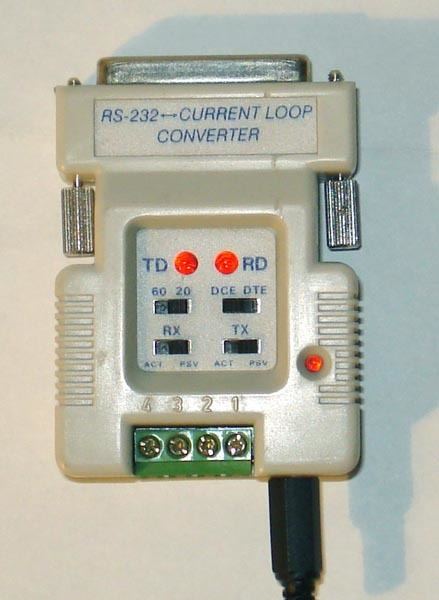 | ||
For serial communications, a current loop is a communication interface that uses current instead of voltage for signaling. Current loops can be used over moderately long distances (tens of kilometres), and can be interfaced with optically isolated links.
Contents
History
Long before the RS-232 standard, current loops were used to send digital data in serial form for teleprinters. More than two teleprinters could be connected on a single circuit allowing a simple form of networking. Older teleprinters used a 60 mA current loop. Later machines, such as the Teletype Model 33, operated on a lower 20 mA current level and most early minicomputers featured a 20 mA current loop interface, with an RS-232 port generally available as a more expensive option. The original IBM PC serial port card had provisions for a 20 mA current loop.
A digital current loop uses the absence of current for high (space or break), and the presence of current in the loop for low (mark). This reduces power consumption in the driver circuits, as most lines are in the spacing condition (no data) much of the time.
Electrical characteristics
The maximum resistance for a current loop is limited by the available voltage. Current loop interfaces usually use voltages much higher than those found on an RS-232 interface, and cannot be interconnected with voltage-type inputs without some form of level translator circuit.
